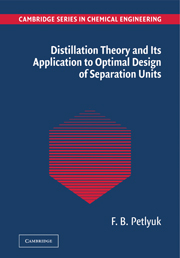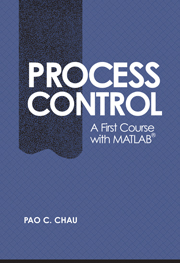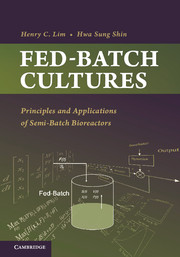Distillation Theory and its Application to Optimal Design of Separation Units
Originally published in 2004, Distillation Theory and Its Application to Optimal Design of Separation Units presents a clear, multidimensional geometric representation of distillation theory that is valid for all distillation column types, splits, and mixtures. This representation answers such fundamental questions as: what are the feasible separation products for a given mixture? What minimum power is required to separate a given mixture? What minimum number of trays is necessary to separate a given mixture at a fixed power input? This book is intended for students and specialists in the design and operation of separation units in the chemical, pharmaceutical, food, wood, petrochemical, oil-refining, and natural gas industries and for software designers.
- Presents a clear multidimensional geometric representation of distillation theory, that is valid for all types of distillation
- Petlyuk is well known for seminal work in distillation theory
- Contains exercises to be solved with demo DistillDesigner software, which is available free on accompanying website
Reviews & endorsements
Review of the hardback: 'The book shows a clear, multidimensional, geometric representation of distillation theory, which is applicable to all kinds of distillation columns for all splits, column types and mixtures … the book considers problems that are beyond the framework of the geometric theory of distillation but they still are of importance from both the theoretical and practical standpoints … contains many diagrams, which facilitate the understanding of geometry theory … intended for a wide variety of specialists …This book can serve as a manual for students and postgraduate who want to refine their understanding of distillation.' Iasi Polytechnic Magazine
Product details
March 2011Paperback
9780521174060
362 pages
244 × 170 × 19 mm
0.58kg
Available
Table of Contents
- 1. Phase equilibrium and its geometrical presentation
- 2. Basic concepts of distillation
- 3. Trajectories of distillation in infinite columns under infinite reflux
- 4. Trajectories of thermodynamically reversible distillation
- 5. Distillation trajectories and conditions of mixtures separability in simple infinite columns at finite reflux
- 6. Distillation trajectories in infinite complex columns and complexes
- 7. Trajectories of the finite columns and their design calculation
- 8. Synthesis of separation flowsheets.





